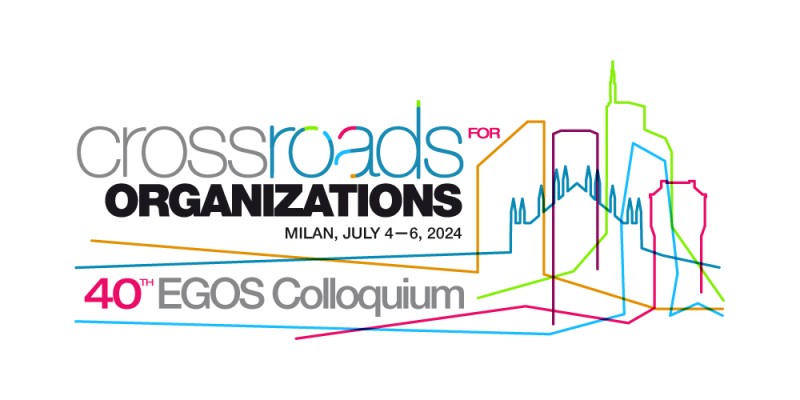Sub-theme 34: Digital Disruption: Professions at the Crossroads?
Call for Papers
This sub-theme considers the implications of integrating digital technologies in professions and professional service firms
(PSFs). To date, extant research has illustrated professions as having well-defined boundaries, with protected domains of
expertise and jurisdictions (Anteby et al. 2016), PSFs as homogeneous organizations, populated by experts with similar backgrounds,
education, and professional identities (Goto 2021). However, as digitalization increasingly permeates our societies, knowledge
and expertise becomes more ubiquitous – thus challenging existing monopolies of expertise (Muzio et al. 2019). Digitalization
also creates new client needs and expectations, regarding both what type of services, expertise, and interactions the PSFs
should offer (Smets et al. 2017). This development has led scholars to speculate in the imminent disruption of professional
services (Susskind & Susskind 2015). Such speculations are however not new. Since the introduction of computers in the
1970s, warnings have been issued that new technologies will replace professionals, make their expertise obsolete, challenge
the professions’ status, autonomy, and power, and threaten the systems of professions (Muzio et al. 2019). Despite these warnings,
professions and PSFs have survived – at least until now.
In this sub-theme, we explore how professions, PSFs
and professionals respond to and enact digitalization (Pemer 2021; Spring et al., 2022). We posit that professions, PSFs,
and professionals find themselves at a crossroads: either they continue their trodden path, or decide to follow a new one,
in which they – spurred by digitalization – need to (re-)shape the boundaries for what they (should) know, what they (should)
do, and who they are (or should be) (Smets et al. 2017). Thus, we are interested in how professions, PSFs, and professionals
engage in maintaining their existing jurisdictions and domains of expertise, and/or redefining them (Anteby et al. 2016).
Drawing inspiration from the literature on boundaries and boundary work, we suggest that digitalization enables hitherto relatively
stable boundaries to blur, and professionals to take on boundary-spanning roles (Faulconbridge et al., 2021).
These boundaries can relate to different dimensions, such as time and space, as digital technologies allow for
hybrid/virtual work, interorganizational boundaries, e.g., to access new expertise and stimulate innovation, organizational
boundaries, e.g., to rethink recruitment, organizational forms, and create boundary-spanning roles, and professional
and individual boundaries, as digitalization motivates members of different professions to collaborate – or compete
(Faulconbridge et al., 2021; Pemer 2021). Consequently, professions, PSFs, and professionals choosing the new path increasingly
need to manage and perform their work across multiple boundaries – simultaneously.
To contribute to the emerging
theorization on this subject, we welcome submissions from a range of different methodologies and theoretical perspectives.
In doing so, the subtheme combines elements of organization studies with the sociology of professions (Muzio et al. 2019).
It opens, but is not limited to, related management disciplines and fields, such as professional identity, digital and business
model innovation, organizational forms, platforms, and ecosystems, liminality and flux. Below, we suggest questions that could
be interesting for this sub-theme, however, we also encourage submissions that approach the topic from different perspectives:
Spatial-temporal dimension: navigating the onsite-online boundary
How do PSFs and professionals organize to manage the onsite-online boundary, and what implications does that have for their team dynamics, innovation, and time management?
Inter-organizational dimension: navigating across organizational boundaries
How do professionals, professions, and PSFs collaborate across organizational boundaries (e.g., in ecosystems, platforms, etc.), how are these collaborations organized and governed, and what new types of organizational forms emerge?
Intra-organizational dimension: navigating across internal boundaries
How do PSFs and professionals organize for boundary-spanning work and roles, and for the recruitment and integration of new types of expertise into their organizations?
Professional dimension: navigating across professional boundaries
How do PSFs’ and professionals’ boundary-spanning activities (see above) influence the professions’ jurisdictions, domains of expertise, and professional identity?
Individual dimension: navigating in flux
How do professionals perceive and enact new boundary-spanning work practices and roles?
References
- Anteby, M., Chan, C.K, & DiBenigno, J. (2016): “Three Lenses on Occupations and Professions in Organizations: Becoming, Doing, and Relating.” The Academy of Management Annals, 10 (1), 183–244.
- Faulconbridge, J.R., Henriksen, L.F., & Seabrooke, L. (2021): “How professional actions connect and protect.” Journal of Professions and Organization, 8 (2), 214–227.
- Goto, M. (2021): “Collective professional role identity in the age of artificial intelligence.” Journal of Professions and Organization, 8 (1), 86–107.
- Muzio, D., Aulakh, S., & Kirkpatrick, I. (2019): Professional Occupations and Organizations. Cambridge, UK: Cambridge University Press.
- Pemer, F. (2021): “Enacting Professional Service Work in Times of Digitalization and Potential Disruption.” Journal of Service Research, 24 (2), 249–268.
- Smets, M., Morris, T., von Nordenflycht, A., & Brock, D.M. (2017): “25 Years Since ‘P2’: Taking Stock and Charting the Future of Professional Firms.” Journal of Professions and Organization, 4 (2), 91–111.
- Spring, M., Faulconbridge J., & Sarwar, A. (2022): “How information technology automates and augments processes: Insights from Artificial‐Intelligence‐based systems in professional service operations.” Journal of Operations Management, 68 (6–7), 592–618.
- Susskind, R., & Susskind, D. (2015): The Future of the Professions: How Technology Will Transform the Work of Human Experts. Oxford, UK: Oxford University Press.


